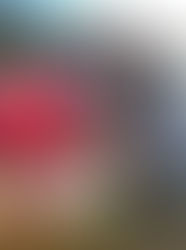SAFER Blog: Bringing the Ocean to Town – SAFER Lab aquarists
- Michael Skeeles
- Jun 21, 2018
- 2 min read

World renowned aquariums, such as the likes of Cape Town’s Two Oceans Aquarium, amaze visitors with facilities that allow marine fish to live on land. It is no different here at Rhodes University’s Department of Ichthyology and Fisheries Science, the home base of the SAFER Lab, where advanced seawater housing systems ensure the survival of marine fish 130km inland. This is imperative for laboratory based physiological studies which form one of the key components of SAFER Lab’s research. So, let’s walk through the process of ‘bringing the ocean to town’!

The procedure begins with a thoroughly planned fishing trip either taking place on shore or at sea, depending on the target species. Specific research permits mean that vehicles can drive on the beach and fish can be transported alive. The transportation protocol follows the Food and Agriculture Organisation (FAO) guidelines for live fish transport whereby 25 captured fish are driven in a 1000 litre tank, supersaturated with oxygen. Anaesthetics are used where needed and fish arrive at the Grahamstown or Port Alfred holding facilities within the same day.
In Grahamstown, fish are held in one of two 5900 litre cylindrical tanks belonging to The South African Institute of Aquatic Biodiversity’s (SAIAB) Aquatic Eco-physiology Research Platform (AERP). These tanks are connected to a highly advanced aquaculture system where water is recirculated by a pool pump to a filtration system that consists of a sump, protein skimmer, bubble bead filter, fluidised bed biological filter and UV sterilisers. Thus, the system is water efficient and constantly purified. Fish are fed their natural diet once every two days and water quality tests are performed daily to ensure the system remains healthy. The temperature and light cycle within the room is maintained at what the species would experience in the wild. Within a month the fish acclimate to captivity and experiments can proceed.

To date we have had a 100% success rate with fish captivity. Red roman (Chrysoblephus laticeps), bronze bream (Pachymetopon grande) and blacktail (Diplodus sargus) are the three species that have been successfully housed at AERP. The challenging process of capturing and holding marine fish in captivity is often completely overlooked in research outputs. Thanks to our technical team, led by Dave Drennan, who make it all possible. The next step is to attempt to spawn red roman in captivity, which will form part of Cuen Muller and Pule Mpopetsi’s doctoral studies. Watch this space…





























Comments